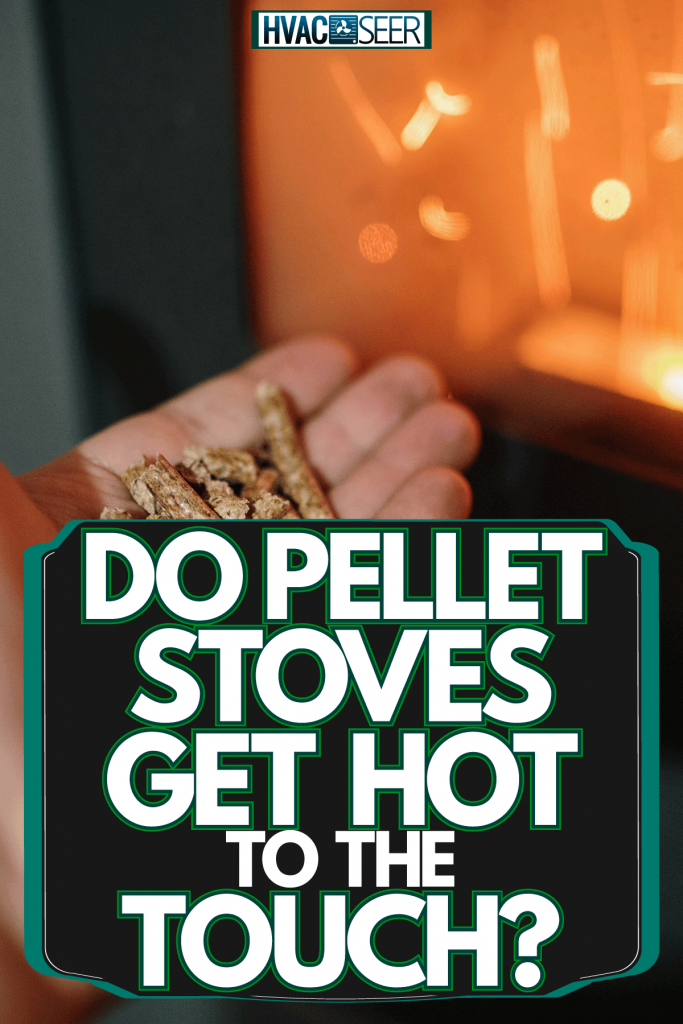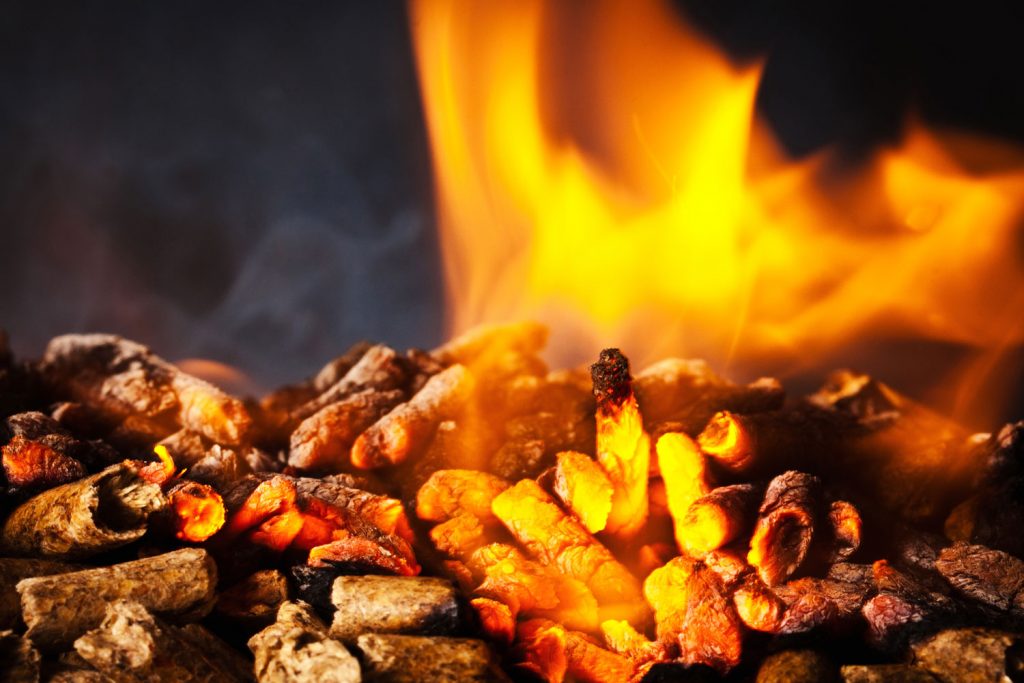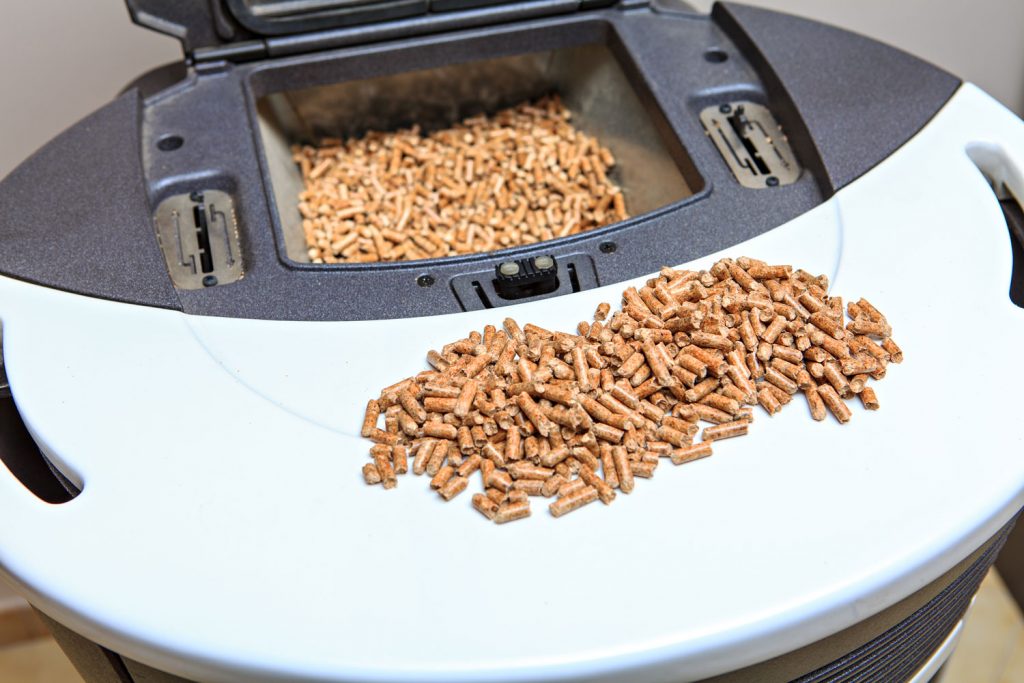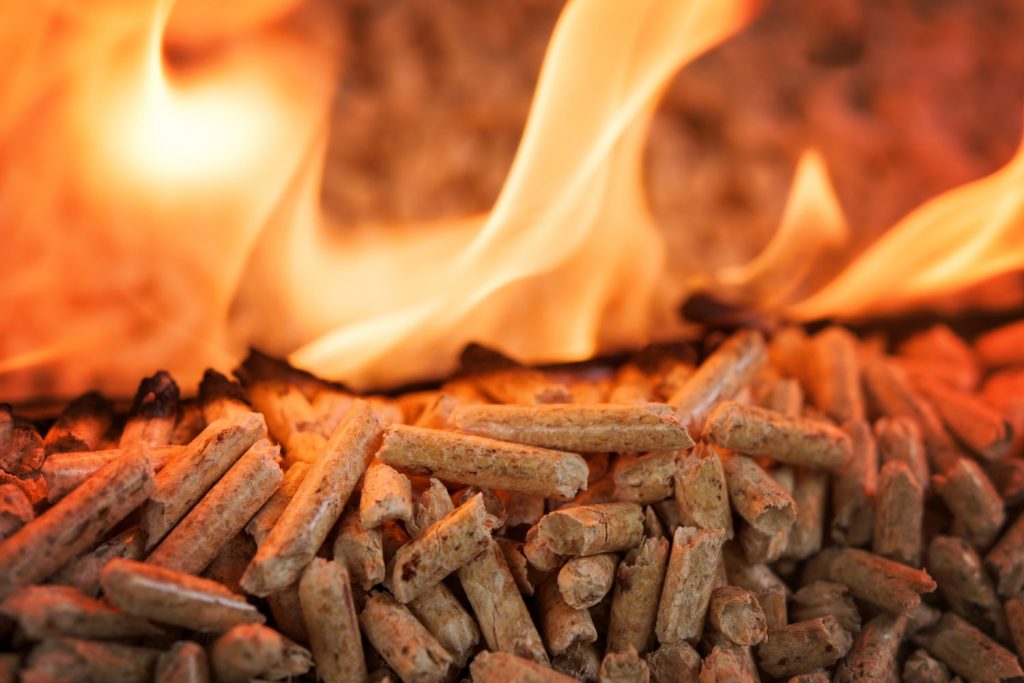Pellet stoves provide heat to a nearby space by burning wooden bits. So it can make you wonder if this appliance gets hot to the touch. We researched and asked different experts about this matter, and here’s what they told us.
Touching a pellet stove on its glass or exhaust pipe can be scalding. However, the rest of the stove should only be warm. If certain areas like the top of the appliance feel hotter than average, it might be malfunctioning.
Understanding how a pellet stove works will help ensure that it functions optimally. Continue reading to learn how this heating system works. We’ll also tackle information like the right amount of heat produced by the stove and how to make sure that it supplies quality warmth.

Do Pellet Stoves Burn Hot?
Pellet stoves generally use carbon dioxide (CO2) to burn small pieces of wood or pellets. The heat produced by igniting these fairly small wooden objects is cooler than the high temperature supplied by a traditional wood-burning stove.
Efficient pellet stoves are usually warm to the touch. Although, some parts of these appliances are unsafe to touch during operation. Avoid touching areas like the exhaust pipe and the front glass.

How To Start A Pellet Stove?
Users can expect optimal warmth generated from their pellet stoves if they use these appliances properly. Take note that the processes of operating these systems can differ based on specific models.

In this section, you’ll learn the steps to start both the automatic and manual variants:
Automatic Pellet Stove Startup Guide
- Check the owner’s manual to identify the locations of the different parts, including the hopper and on/off switch.
- Pour your preferred pellets into the hopper. Don’t fill the container to the brim. Instead, pour until you fill the hopper to about 3/4ths its volume. Close the lid afterward.
- Push the on button on the control panel.
- Wait for the flame to rise to about 4 to 6 inches in the firepot. Furthermore, the color of the flame should be bright yellow.
- Turn on the stove’s fan.
Manual Pellet Stove Startup Guide
- Read the owner’s manual to identify the different parts. This owner’s guide should also outline the warnings that come with using the appliance.
- Pour pellets into the hopper until you fill about 3/4ths of its volume. Close the lid after you finish.
- Scoop about two handfuls of wooden pellets and place them into the burn pot until the carafe is full. Doing so should start the fire.
- Apply ignition gel on the top of the pellets and stir the mixture. Avoid using lighter fluid as it can drip through the container, risking damage to the stove.
- Ignite the flame by placing a lit match next to the ignition gel.
- Wait for the fire to rise about 4 to 6 inches before closing the door. This step should take about 1 to 3 minutes to complete.
- Turn on the fan to help prevent the stove from overheating.
Should The Top Of My Pellet Stove Be Hot?
The top of a pellet stove, and other various parts of the system, should only be warm to the touch during operation. Pellet stoves usually have an internal fan that blows air to the heat exchanger. In turn, the appliance uses additional heat to warm the space.
Therefore, something is amiss with the system if the top of a pellet stove emanates scalding temperatures. Turn off the appliance, have it checked if you don’t know or aren’t confident to troubleshoot it.
Still, if you want to try fixing your pellet stove, watch the video below:
How Hot Is The Fire In A Pellet Stove?
Environmental Protection Agency (EPA) certified pellet stoves provide heat to space at an approximate range of 8,000 to 90,000 British Thermal Unit (BTU).
For example, a pellet stove that can produce 42,500 BTU can supply comfortable warmth to a 1,000-square foot space. If the heat produced by a particular stove falls within that range, the appliance is suitable for different homes, including apartments and condominiums.
Why Does Your Pellet Stove Use So Many Pellets?
Heating a large room or if the outside temperature is currently hot can make a pellet stove use more pellets than average. It’s best to turn off the stove if you think it’s exerting more effort to produce heat than usual. Overworking a pellet stove can promote harm to the system, which might lead to a total system shutdown.
Can You Leave A Pellet Stove Unattended?
It’s okay to leave a pellet stove unattended, provided that the appliance is in good working condition. You can leave it burning while you’re out or keep the flame alive overnight as long as the hopper has a sufficient supply of wood.
But take note that a pellet stove can become a fire hazard if it has faults. A malfunctioning stove can introduce an abnormal fire, which can increase in intensity and spread throughout the system. If left unattended, faulty pellet stoves can be the primary cause of house fires.
You shouldn’t leave the pellet stove unattended if:
- It’s not burning wood well.
- Soot or smoke is developing more than usual.
- The pellets don’t feed properly.
- Visible sparks are appearing on the wiring when you turn on the appliance.
You might also find the amount of electricity required to keep a pellet stove running for extended periods. Check out this post to learn more about this appliance’s average energy requirements: How Much Electricity Does A Pellet Stove Use?
Why Is Your Pellet Stove Not Heating Your House?
If your pellet stove isn’t producing enough warmth to your house, it might be encountering issues. Clean the blower or remove a blockage from the intake if there's any. Also, a significant amount of ash might be covering the heat exchangers, insulating the airflow. Think about doing an initial checkup for your pellet stove before requesting professional help.
How Can You Get The Most Heat Out Of A Pellet Stove?

Getting the most value from a pellet stove’s heat ensures that the appliance maintains optimal efficiency in burning wood. The following are some tips to help maintain the stove’s proper functionality:
Frequent Maintenance
Regular care and cleaning can help improve the quality of the flame supplied by a pellet stove. Each part will need different frequencies of maintenance. Some examples include:
- Heat exchanger: 7 to 10 times per day
- Firepot: Once per day
- Firebox: Once every 3 to 5 days
- Ash pan: Needs to be emptied after each use
Additionally, you should have your pellet stove deep cleaned at least once every two weeks. If you have the time, deep clean the appliance at least once every three days, especially if you’re using it frequently.
Watch the following video to learn the process to clean your pellet stove:
Also, read the following post to learn more about the importance of cleaning heat-producing appliances: Should You Leave Ashes In A Wood Stove?
Fine Adjustments
Certain pellet stove models will have controls or thermostats that adjust the heat output. Adjusting the thermostat will also alter the fan speed and burn rate, which users can fine-tune for their preferences or requirements. But if you have an older model, you may need to increase or decrease the fan speed manually to control the rate at which the stove burns the pellets.
Pellet Choices
Think about certain factors when choosing your pellets to burn in the stove for different pellets affect the quality of flame produced. Some of these elements include:
- Type of wood: Organic wood often burns better than composite options.
- BTU: Also called heat output, softwood typically burns hotter than hardwood because of its higher thermal release.
- Ash content: Aim to use pellets with less than 1% of the pellet’s weight. Pellets with over 1% ash content can cause blockage in the stove, leading to risks of lazy flames.
Final Thoughts
Unlike the traditional wood-burning stove, a pellet stove takes advantage of CO2 to provide warmth to a space. Therefore, the heat produced by a pellet stove is often cooler than its wood-burning counterpart. Users should even be able to touch certain parts of their pellet stoves while these appliances are functioning.
However, avoid touching parts like the glass or exhaust pipe since these components generally contract the most heat from the appliance.
You can leave a pellet stove unattended for extended periods. But keep in mind that it shouldn’t be malfunctioning. Otherwise, a faulty stove might generate more heat than usual, causing the system and its surroundings to catch fire.
